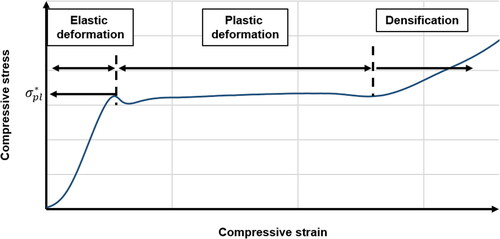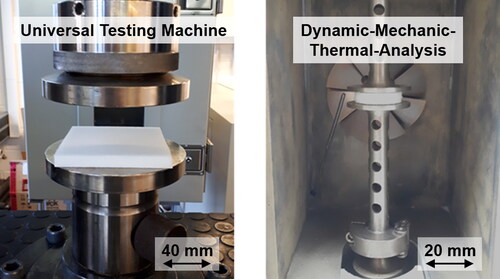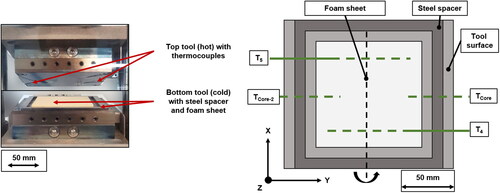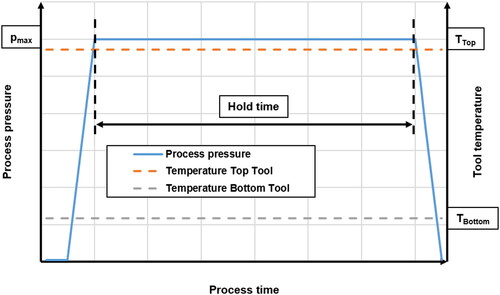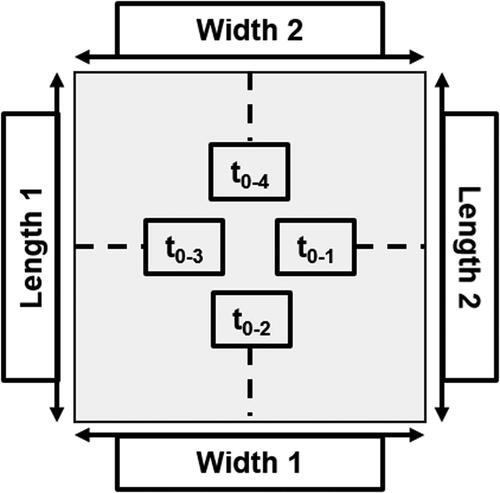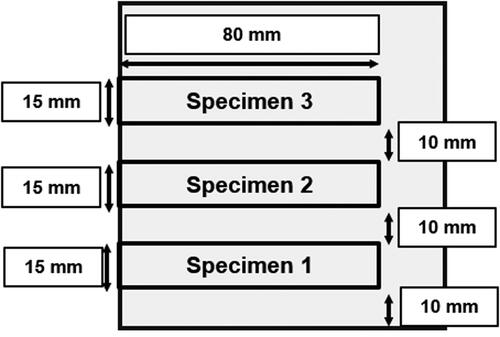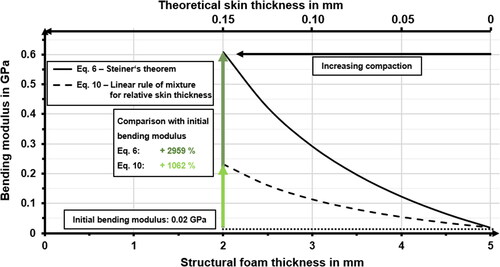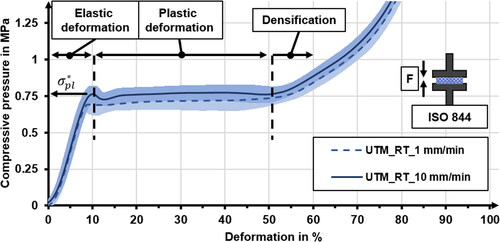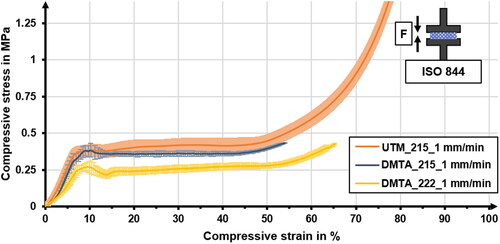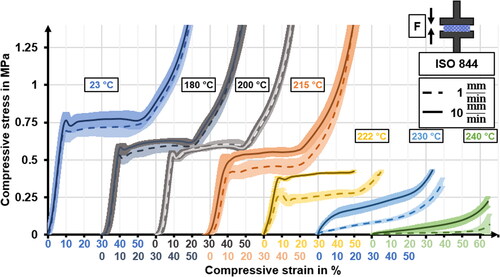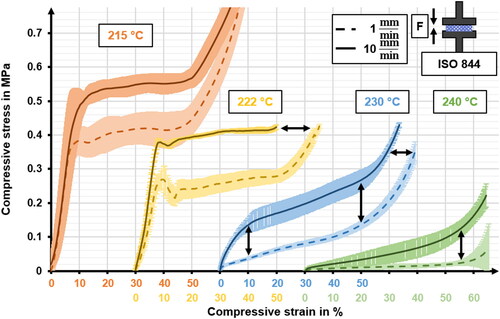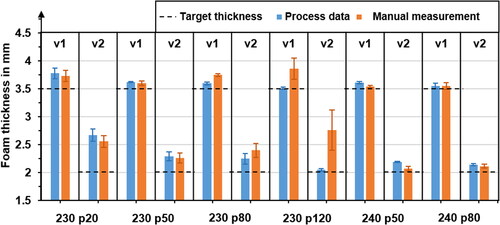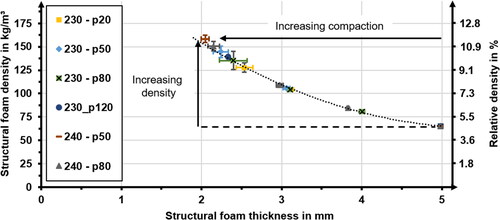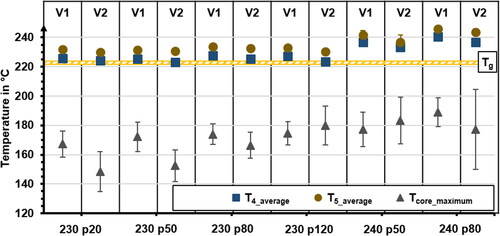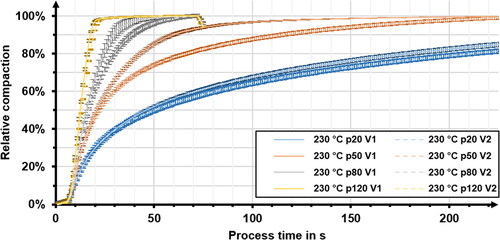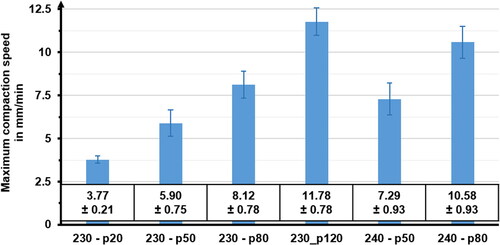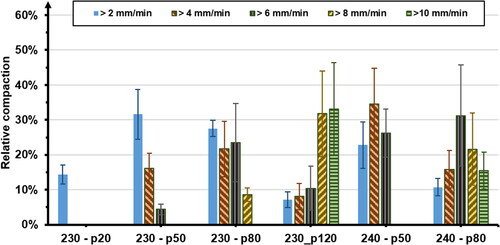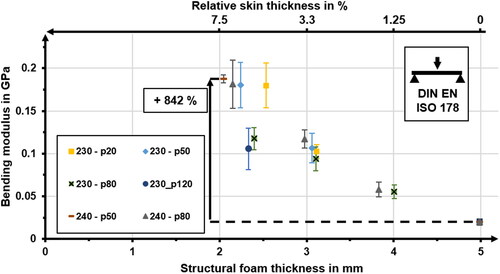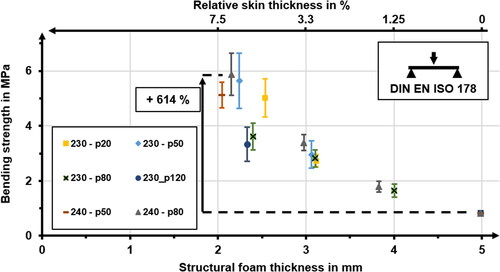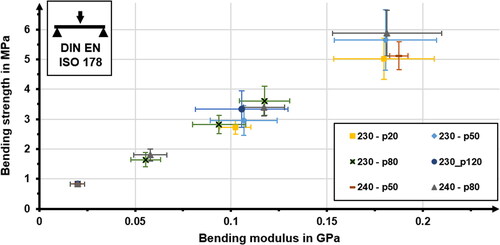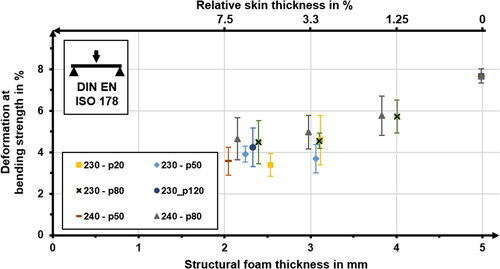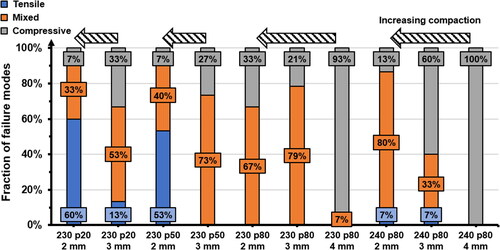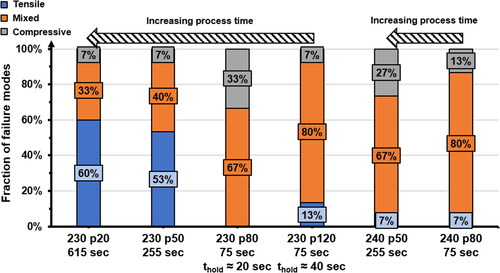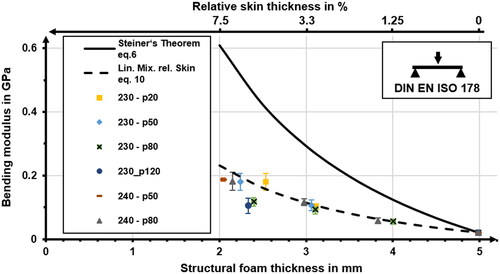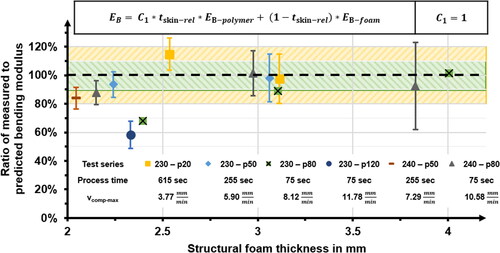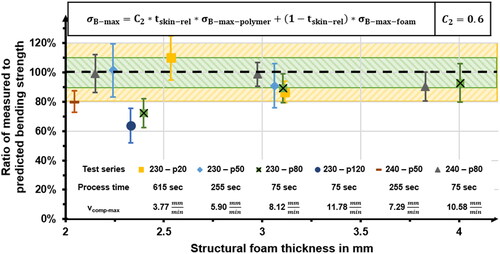Figures & data
Figure 2. Young’s modulus for semi-crystalline (sc) and amorphous (a) thermoplastic polymers, based on [Citation11].
![Figure 2. Young’s modulus for semi-crystalline (sc) and amorphous (a) thermoplastic polymers, based on [Citation11].](/cms/asset/d7df0af5-6387-47fb-a81d-0f0b2b74ca8f/yadm_a_2269021_f0002_c.jpg)
Figure 3. Schematic drawing of the cross section of uniform density foam (left) and structural foam (right).

Figure 4. Selection of equivalent cross section models presented by Hobbs [Citation15].
![Figure 4. Selection of equivalent cross section models presented by Hobbs [Citation15].](/cms/asset/f8899ea9-45dd-4b45-a889-3455e03c405c/yadm_a_2269021_f0004_c.jpg)
Figure 5. Comparison of density and stress distribution in homogeneous foams, composite sandwich and structural foams, based on ref. [Citation17].
![Figure 5. Comparison of density and stress distribution in homogeneous foams, composite sandwich and structural foams, based on ref. [Citation17].](/cms/asset/59607406-b7fa-4d26-b418-2264c9d8c6fe/yadm_a_2269021_f0005_c.jpg)
Table 1. Properties of semi-finished materials.
Table 2. Test series on UTM and DMTA.
Figure 7. Manufacturing thermoplastic structural foams in a hot press process [Citation4].
![Figure 7. Manufacturing thermoplastic structural foams in a hot press process [Citation4].](/cms/asset/946ad8f9-4838-41bb-95a2-bebb6858bdb1/yadm_a_2269021_f0007_c.jpg)
Table 3. Test series for manufacturing structural foam.
Figure 10. Exemplary comparison of process pressures—target values vs. recorded—(top), relative compaction (center), compaction speed during the process (bottom).
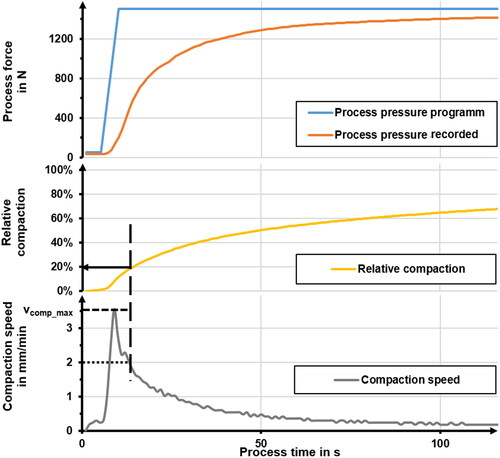
Figure 11. Exemplary comparison of relative compaction (top) and compaction speed (bottom) for different pmax at tool temperatures of 230 °C.
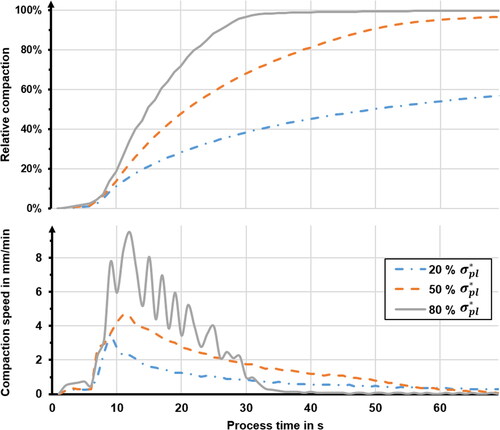
Figure 13. Schematic for three-point-bending tests [Citation33].
![Figure 13. Schematic for three-point-bending tests [Citation33].](/cms/asset/cecf1eb8-22e1-4878-b05e-337c4c3875ac/yadm_a_2269021_f0013_c.jpg)
Table 4. Support length for different part thicknesses.
Figure 18. Influence of temperature on quasi-static compressive behavior at a crosshead speed of 1 mm/min.
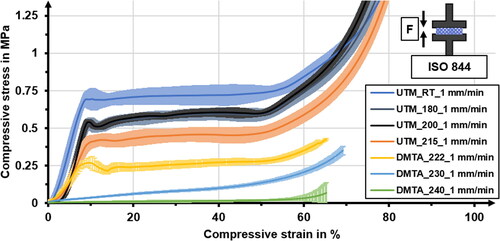
Table 5. Compressive strengths determined for different temperatures.
Table 6. Comparison of characteristic values derived from process data.
Figure 24. Comparison of pressure, compaction, and temperature progression during a hot press process.
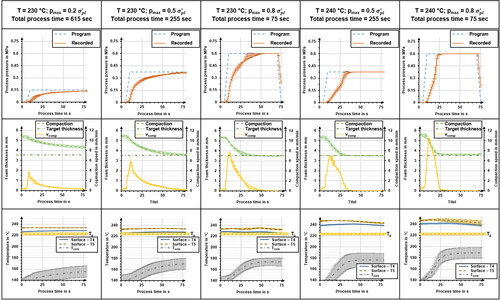
Figure 32. Qualitative comparison of different stress–strain-curves occurring during three-point-bending.
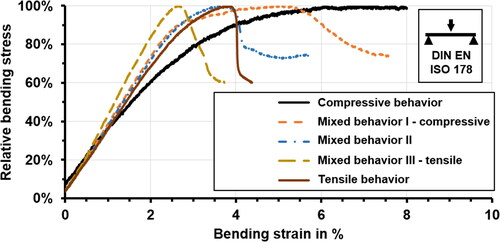
Figure 36. Comparison of measured and predicted Equation(Eq. 11)(11)
(11) bending moduli.
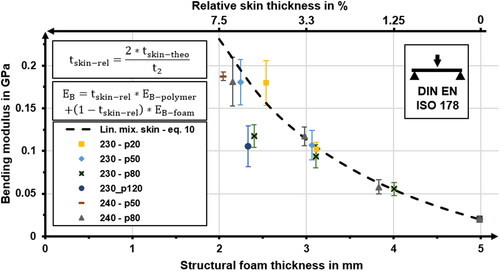
Figure 38. Comparison of measured and predicted (EquationEq. 17(17)
(17) ) bending strengths.
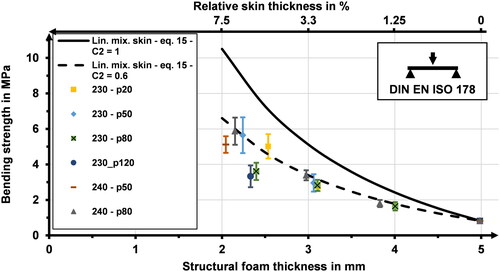
Table 7. Comparison of measured and predicted values for bending properties.
Figure 40. Comparison of performance and structure for structural foams manufactured with different process parameter sets.
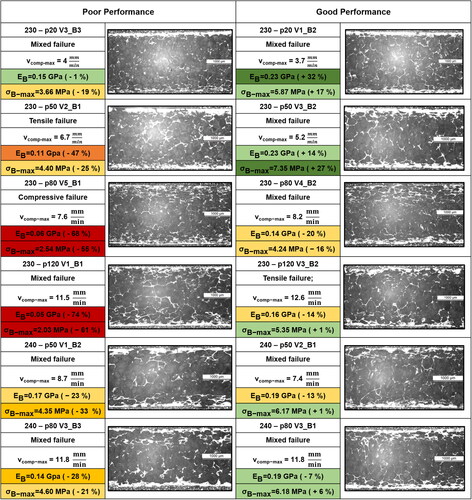
Data availability
The data that support the findings of this study are available from the corresponding author, upon reasonable request.


